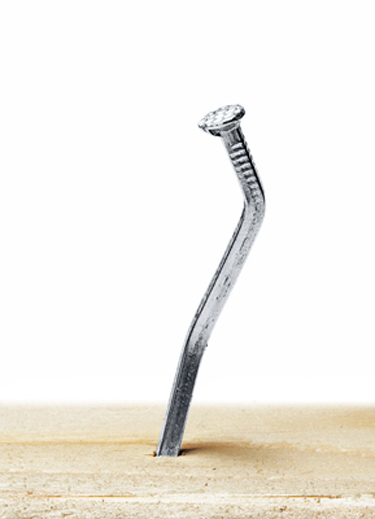by Alex Brown
Director of Operations
A2L Consulting
My hobby is woodworking. Recently, I had to build a dog fence so that my wife could train one of our dogs. From photos I figured out the dimensions, type of wood to use, and the hardware needed. What I did not take into consideration were the tools I would need to complete the job easily and on schedule.
In the process of building the fence, I ended up at our local ACE Hardware store shopping for multiple tools including one I had never used before, a planer. Only after destroying a few key parts for the fence did I learned my lesson, and I decided to figure out how to use the tool that was supposed to make the job easier.
When preparing for a trial, most decisions are made prior to the actual trying of the case. Who will be the expert witnesses, what is the theme, how and when do we introduce our evidence, and how do we present it to the jury or judge in an engaging and persuasive way in the form of a trial presentation. PowerPoint is key to most trial presentations, and we all believe we know how to use this tool. But, we also know that at 3 AM, 48 hours prior to opening statements, is the time when Murphy's Law shows up to cause a little havoc. Below are seven ways to use PowerPoint effectively to reduce the strain that Mr. Murphy seems to always introduce.
- Outline. Before you even click on the PowerPoint icon, you need to have the content ready so you can create an appealing graphic for trial presentation. What is your goal, who is your audience, what are the key points that need to be shown, and what needs to be discussed? Only then can you create the visual representation to persuade the audience.
- Less is more. Upon what should your audience be focusing while you are talking? You (mostly). The best presenters in the world know this, and we are mesmerized when they give a presentation. Reduce your text and increase your visuals. If someone tells you that a picture is NOT worth a thousand words, it is because they could not figure out what the picture should be. We are a visual society (the majority of the population learn and remember this way) this is your audience.
- You are not your audience. Most litigators are NOT visual preference learners. You have to remember to present in the language of your audience. Use all of the learning styles, use your words, but make sure your visuals support these words. Use models or boards so those in your audience that are "hands on" get the chance to learn from their base. This combination will mean, at one point or another, you will speak directly to everyone; this is key when you are trying to make them understand and, more importantly, persuade them.
- Timing is everything. If you are following the best practice of having each trial presentation slide only contain one point at a time, understand that this is one of the reasons: IMPACT. Have you ever been telling a joke and someone blurts out the punchline before you're finished? As you are guiding the jury down the story line you use your visuals as support, and when the time is right (not too early, and definitely not too late), you reveal your "impact" image to support your theme with the "smoking gun" evidence or graphic. It is a sure fire way to hammer your point home.
- Style is important. As much as we believe we know how to create an awesome PowerPoint, there are things that we do not use often enough, like Style Sheets. These are important so your presentation does not look like 66 writers were used to create it. Style Sheets allow you to create a unified and intentional look that flows from start to finish and keeps jurors focused on content, not uneven boarders, odd colors, or worse case, "I can’t read that, what did it say?"
- Practice? Were talkin' about Practice. "Practice doesn't make perfect. Practice reduces the imperfection." The key to a great PowerPoint trial presentation is, when you are using it, make sure it's not the first time. You have to know it as well as you know your story so it can be integrated into a cohesive unit, not just appear to be an afterthought.
- Use a professional. Last month I hired a podiatrist to perform open heart surgery on my family dog, said no one EVER. You are a litigator, and I’ll assume a damn good one, why in the world would you take time off the clock to create a PowerPoint presentation? Using a professional can actually reduce the pressure and cost of trial preparation for you and your client. A professional should be able to comprehend your theme and integrate it into the presentation. They should do it faster than anyone in your firm possibly will, and better. They should be able to give YOU ideas and an outsider's perspective that you might not have considered, and they should have the experience to make you comfortable with the process, allowing you to stay focused. The best of the best litigation consultants have litigation experience that they draw from which gives you another expert in the room when strategies are developed and implemented.
Other articles and resources on A2L Consulting's site related to PowerPoint, trial presentation, litigation graphics, storytelling for persuasion, trial graphics and demonstrative evidence:
- Run a conflicts check with A2L Consulting
- How I Used Litigation Graphics as a Litigator and How You Could Too
- Free Webinar: PowerPoint Litigation Graphics Best Practices and Storytelling
- The 12 Worst PowerPoint Mistakes Litigators Make
- Don't Use PowerPoint as a Crutch in Trial or Anywhere
- Patent Infringement Trial Graphics: Illustration + PowerPoint
- Why Reading Your Litigation PowerPoint Slides Hurts Jurors
- 16 PowerPoint Litigation Graphics You Won't Believe Are PowerPoint
- 7 Ways to Avoid Making Your PowerPoint Slides Your Handout
- 12 Ways to Eliminate "But I Need Everything On That PowerPoint Slide"






Leave a Comment